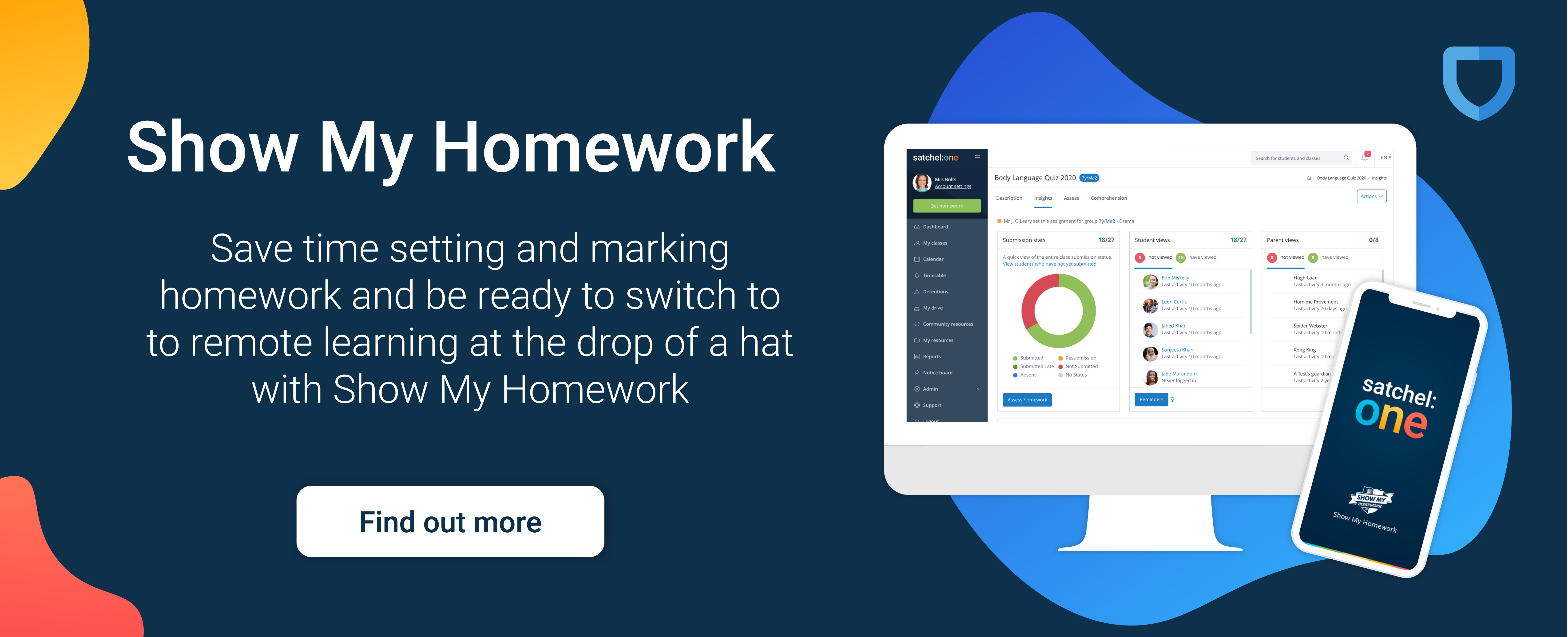Author: Bethany Spencer
Posted: 10 Apr 2018
Estimated time to read: 7 mins
Flipped learning has risen to prominence over the past few decades and its popularity has soared in more recent years. It’s not entirely clear when the term ‘flipped learning’ was coined to explain this pedagogical practice, but what is certain is the impact many educators claim it has on students’ learning.
What is Flipped Learning?
Flipped learning sees the traditional roles of learning and homework switched, whereby the traditional teaching/learning practice is conducted outside of class hours (home-learning) and application of knowledge is applied during class time.
Before implementing flipped learning in your classroom, there are some aspects that need to be considered. Firstly, in order to do this, you need to understand that flipped learning and a flipped classroom are not interchangeable - flipping a classroom can, but doesn’t always, lead to flipped learning. There are four core pillars that educators must follow in order to successfully execute flipped learning pedagogy which are outlined below:
Flexible Environment
The way in which you absorb flipped learning isn’t as structured as usual classroom learning and your classroom needs to accommodate for this. Lessons won’t always follow the same structure and classrooms should support the ability for students to work independently or in groups. These flexible spaces mean that students are able to choose where and how they learn.
Learning Culture
Traditional learning in class is teacher-centred, whereby the teacher is the primary source of information. Students are fed information in class and exploration and expansion of the topic is usually done so independently outside of school hours. Flipped learning sees a shift from this to student-centred learning.
Students research subjects independently ahead of lesson time and instead, use the lesson to broaden their understanding and delve deeper into a topic, and if needed have the guidance of teacher. This style of learning promotes student ownership of work and means students are more engaged with the information they’re consuming.

Intentional Content
Intentional content within flipped learning focuses on choosing the best content to be delivered both in and out of the classroom. In this model, new content is taken outside of the classroom and therefore the highest quality content is needed to ensure students are able to learn this to the best of their ability.
By taking the learning outside of class, students aren’t restricted to how much time they can dedicate to learning and can use class time applying the knowledge they’ve learnt with the guidance of their teacher. By carefully selecting the best content for students to use outside of class, you will not only free up lesson time so that students really get to apply what they have learnt, you will also help shape students in becoming autonomous learners.
Professional Educator
In a flipped classroom, educators’ roles shift from what is traditionally expected of a teacher in the classroom. In the traditional sense, a teacher’s sole purpose would be to impart knowledge and teach students new content, which they would then apply outside of the classroom.
This classroom is more controlled and structured than a flipped classroom, whereby students are applying knowledge they’ve researched outside of class. In this classroom, educators’ new role turns to guiding students, providing real-time feedback, assessing and evaluating their work in the moment. They take control of a more chaotic classroom and reflect on their processes. Despite being a less visible role in the classroom, they are key to the success of the flipped classroom.
Flipped Learning Pros and Cons
The effectiveness of the flipped learning model has been evaluated since its rise to popularity with many educators and theorists finding multiple benefits associated with the practice.
However, as with most things, there are certain aspects that leave a few people sitting on the fence. We’ve gone through some of the main benefits of flipped learning as well as areas for concern and disputed them where possible:
Pros
Flipped learning allows students to be in control of their own learning. By giving them the content they need to learn outside of class time, they are free to learn at their own pace without time restrictions. They can revisit the subject matter as many times as they need to and make appropriate notes. Additionally, they can come to class prepared with directed questions to ask their teachers that will help improve their understanding of a topic.
A student-centred classroom helps to create autonomous learners. The ability for students to work under their own direction is something they can easily transfer to university and jobs in later life. A core part of in-class flipped learning are collaborative projects - these tasks, alongside in-class discussions, allow students to learn from one another, but also - to apply the knowledge which they have learnt independently.
Students receive personal and directed feedback. When students have the opportunity to apply new knowledge they’ve learnt in front of their teachers and peers, more quickly can their teachers step in and provide praise and feedback to further encourage and guide students. By providing live feedback, students are able to instantly apply this and improve their current understanding which will only help further their development.Studying information outside of lessons limits the amount of time spent learning this information and students’ workload
Parents are provided insight into what their children are studying and the curriculum they are taught. In traditional teaching, parents only get to view students attempting to apply knowledge through homework set, not the knowledge they’ve been taught. By looking at the intentional content teachers assign students to learn the curriculum, they’re fully aware of the information they’re being taught. This level of insight means they can actively involve themselves in their child’s studies and provide better support at home if needed.
Many have argued that flipped learning is more efficient than traditional learning for both students and teachers. Studying information outside of lessons limits the amount of time spent learning this information and students’ workload. For example, if a video takes 20 minutes to watch, the learning is condensed into this time, plus any additional rewinds and note taking, as opposed to an hour lesson in which they have to work to the pace of the average student This means students have more free time outside of lessons, and the time they spend on new topics is better absorbed.
Cons
For most educators who follow the flipped learning model, the content they give to their students to study outside of lesson time needs to be accessed online. This can cause a digital divide within schools, whereby students who don’t have access to internet at home are left at a disadvantage as they’re unable to access the learning materials.
This argument does surface regularly and isn’t just applicable to the flipped learning model. A lot of valuable resources and whole-school software systems require students to have an internet connection in order to access them. This can be solved by schools setting up homework clubs, in which students are able to use school computers and internet access to complete any additional work which requires it.
In order for flipped learning to be successful, teachers are reliant on students completing the work at home, we could argue that this is the same case as with homework, however the key difference is that if students do not partake in their outside-of-class learning, they won’t be able to engage with their in-class learning.
By delivering content to students via a medium they’re familiar with and enjoy, the content they’re absorbing is only going to resonate with them more
However, as with all types of teaching and learning, student participation is crucial to it ever being effective, and a benefit of flipped learning would be that because class time is all about applying knowledge learnt, it will become starkly apparent which students are not doing the work outside of class and teachers will be able to intervene much more quickly.
Despite flipped learning helping to make home-learning more efficient for students, it has been disputed that it can in fact add to teachers’ workloads. Recording all lessons for year groups and planning new lessons which are centred around the application of knowledge as opposed to retention does and will take time. However, this doesn’t have to be a time drain, filming lessons as they happen, sharing the workload between colleagues and filtering the flipped learning approach into your lessons will help to ease the strain of this task.
The majority of the at-home work carried out by students involves a lot of screen time which raises concerns for some as it takes away from face to face interaction which students need to engage in to become well-rounded individuals. Today, the everyday secondary school student will be engaged with technology, as a society we are more open to online applications.
By delivering content to students via a medium they’re familiar with and enjoy, the content they’re absorbing is only going to resonate with them more. Additionally, with more collaborative learning during lesson time, students will get more opportunities to engage with peers via face-to-face interaction.
Flipped Learning and Show My Homework
Despite flipped learning not providing homework in the traditional sense, learning at home is still a central part to the practice and therefore communicating this to students is key. Show My Homework, although used predominantly for conventional homework tasks, can be used to fully support the flipped learning model.
Show My Homework acts as a communication tool for most teachers, relaying information regarding home-learning that both parents and students can access on their own personal devices. With this at the core of its functionality, the software lends itself to supporting the flipped learning model. Teachers can upload the intentional content students should be focusing on at home and any additional directions along with due date, suggested time to complete the task and its marking scheme if applicable.
By communicating home-learning in this manner, teachers can rest assured that students have received the work set and all content and resources are fully accessible - this avoids students losing worksheets or not being able to find the correct webpage or video.
Finally, the benefits of having the ability to see if students have viewed the work that’s been set to them, and also parents being able to view when work has been set, opens up more opportunities for parents to support their students at home.



